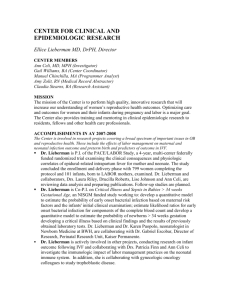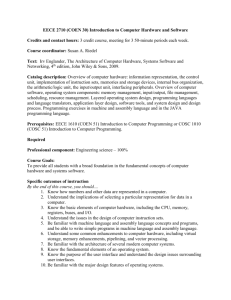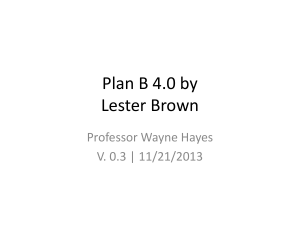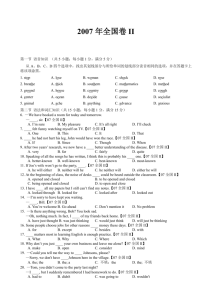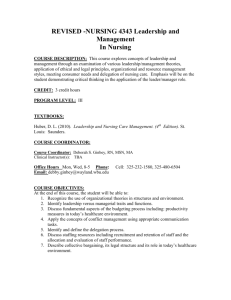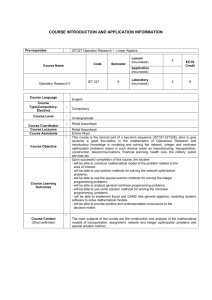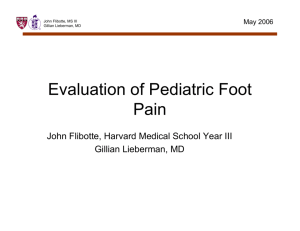File - Sookmyung TESOL MA
advertisement
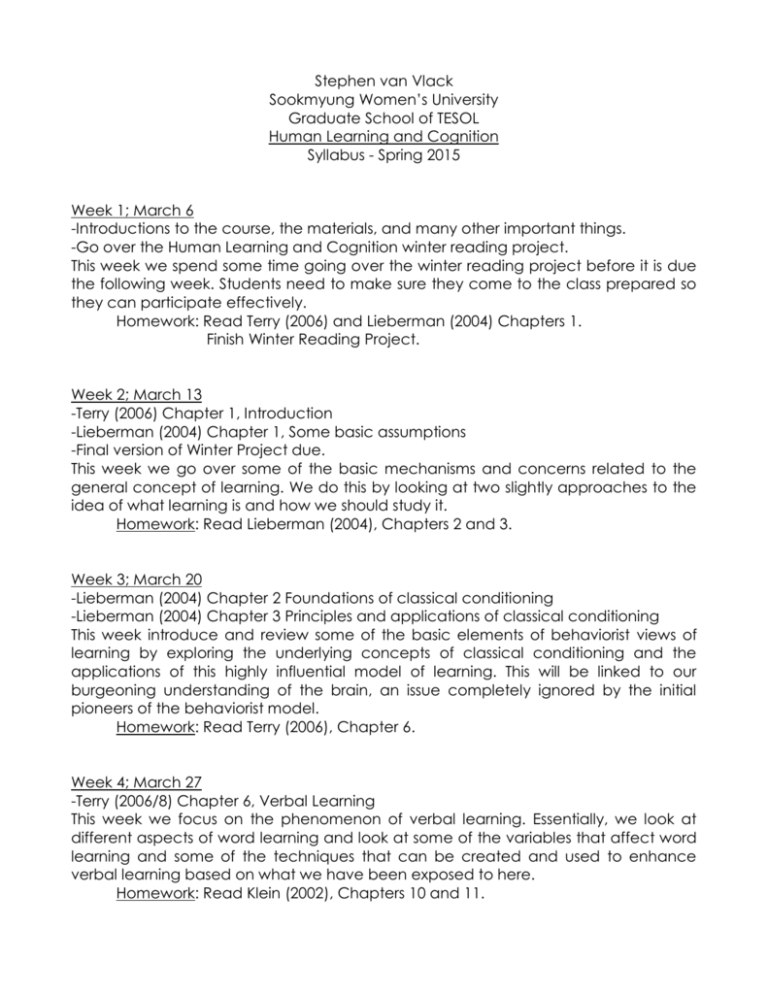
Stephen van Vlack Sookmyung Women’s University Graduate School of TESOL Human Learning and Cognition Syllabus - Spring 2015 Week 1; March 6 -Introductions to the course, the materials, and many other important things. -Go over the Human Learning and Cognition winter reading project. This week we spend some time going over the winter reading project before it is due the following week. Students need to make sure they come to the class prepared so they can participate effectively. Homework: Read Terry (2006) and Lieberman (2004) Chapters 1. Finish Winter Reading Project. Week 2; March 13 -Terry (2006) Chapter 1, Introduction -Lieberman (2004) Chapter 1, Some basic assumptions -Final version of Winter Project due. This week we go over some of the basic mechanisms and concerns related to the general concept of learning. We do this by looking at two slightly approaches to the idea of what learning is and how we should study it. Homework: Read Lieberman (2004), Chapters 2 and 3. Week 3; March 20 -Lieberman (2004) Chapter 2 Foundations of classical conditioning -Lieberman (2004) Chapter 3 Principles and applications of classical conditioning This week introduce and review some of the basic elements of behaviorist views of learning by exploring the underlying concepts of classical conditioning and the applications of this highly influential model of learning. This will be linked to our burgeoning understanding of the brain, an issue completely ignored by the initial pioneers of the behaviorist model. Homework: Read Terry (2006), Chapter 6. Week 4; March 27 -Terry (2006/8) Chapter 6, Verbal Learning This week we focus on the phenomenon of verbal learning. Essentially, we look at different aspects of word learning and look at some of the variables that affect word learning and some of the techniques that can be created and used to enhance verbal learning based on what we have been exposed to here. Homework: Read Klein (2002), Chapters 10 and 11. Week 5; April 3 -Klein (2002) Chapter 10, Biological influences on learning -Klein (2002) Chapter 11, Complex learning tasks This week we look to a different source and some different themes to provide some tentative closure on the theme of learning in the course. We look at how learning is influenced by a range of different biological factors and also look at the learning of complex behaviors an area into which language certainly falls. We seek to find a range of practical implications of both these ideas. Homework: Read Terry (2006), Chapters 7 and Banich (2004) Chapter 10. Week 6; April 10 -Terry (2006) Chapter 7, Human Memory: Conceptual Approaches -Banich (2004) Chapter 10, Memory This week we take a formal look at memory, how it can be seen as working and some of the formal approaches to its design and functions. We also take a specific look at the working of short-term memory and uncover some of the specifics of its working with a view to how we can make use of this information in the classroom. Homework: Read Bower & Forgas (2000), Chapter 3. Week 7; April 17 -Bower & Forgas (200o) Affect, memory, and social cognition. In Eich, Kihlstom, Bower, Forgas, and Neidenthal Cognition and emotion, Chapter 3. This week we take a specific look at some of the different systems that are seen as having a strong effect on memory. We focus on the affectual or emotional side of memory as well as the way that memory is affected by our cognitive functioning as social beings. Thus, in effect, we are looking at some specific contextual variables. Homework: Read Cowan (1999), Chapter 3. Week 8; April 24 -Cowan (1999) An embedded process model of working memory In Miyake & Shah Chapter 3. Homework: Finish up Midterm Project. This week we look at one of the more comprehensive and interesting general models of working memory. In class we discuss the form of the model, but focus our attention on the implications of the model on our understanding of language and language learning. Homework: Read Rugg, Otten, & Henson and Gaffan (2003). Week 9; May 1 -Rugg, Otten, and Henson (2003) The neural basis of episodic memory: Evidence from functional neuroimaging. In Parker, Derrington, and Blakemore Chapter 10. -Gaffan (2003) Against memory systems. In Parker, Derrington, and Blakemore Chapter 11. Midterm Project due. This week we take a deeper look at memory by looking at how empisodic memory is stored on the brain. This coupled with the related idea that, according to Gaffan (2003) there is no real clear possible delineation between traditionally proposed memory systems. Again, we are interested in the implications of these claims on our understanding as it related to language and language learning. Homework: Read Logie & Duff (2007), Martin & Hamiliton (2007), and Marklund & Nyberg (2007). Week 10; May 8 -Logie & Duff (2007) Separating processing from storage in working memory operation span. In Osaka, Logie and D’Eposito Chapter 7. -Martin & Hamilton (2007) Implications from cognitive neuropsychology for models of short-term and working memory. In Osaka, Logie and D’Eposito Chapter 11. -Marklund & Nyberg (2007) Intersecting the divide between working memory and episodic memory. In Osaka, Logie and D’Eposito Chapter 18. This week we look at a range of different ideas in relation to the supposed different types of memory as we seek to draw our exploration of memory to a close. In doing so, we seek to not only find some basic concepts that influence memory systems but also try to bring ourselves closer to a more general understanding of memory as an inclusive aspect of cognition. Homework: Read Lieberman (2000) and Schnelle (2010), Chapters 1. Week 11; May 15 -Lieberman (2000), Chapter 1: Functional Neural Systems -Schnelle (2010), Chapter 1: The brain in functional perspective This week we shift in to the third major phase of the course and take a much more specific look at the brain and the nervous system in relation to language. Both materials introduce similar ideas but from different points of views and for slightly different purposes, so a comparison creates an interesting starting point for our discussion of more specific aspects of the brain and language. Homework: Read Fuster (2003) Chapters 2 and 7. Week 12; May 22 (Holiday – to be rescheduled) -Fuster (2003) Chapter 2, Neurobiology of cortical networks -Fuster (2003) Chapter 7, Language This week we look to a different source for some inspiration and explanation of language and the brain. Fuster is one of the leading theorists in the field and his theories have been highly influential. We, therefore, take a look at two major themes which we hope to cojoin in this class. Homework: Read Lieberman (2000) chapter 2 and Schnelle (2010), Chapter 3. Week 13; May 29 -Lieberman (2000), Chapter 2: Speech production and perception -Schnelle (2010) Chapter 3: Neural perspectives of semantics: examples of seeing, acting, memorizing, meaningful understanding, feeling and thought This week we look at how the brain deals with two seemingly divergent areas of language. These include speech and meaning, especially the interpretation of meaning. Both texts deal with this in different ways, again providing an interesting contrastive point of departure for our discussion in the class. Homework: Read Lieberman (2000) chapter 3 and Schnelle (2010), Chapter 4. Week 14; June 5 -Lieberman (2000), Chapter 3: The Lexicon and Working Memory -Schnelle (2010), Chapter 4: Combination and integration of intelligent thought and feeling This week we combine two intriguing ideas in relation to language – those of words and their multifaceted integrations into the cognitive networks of an individual and the integrations of thought and feelings. This is done in the belief that these two are deeply related phenomenon and that we use words to not only express but more importantly encode our thoughts and feelings. Homework: Read Lieberman (2000) Chapter 4 and Schnelle (2010), Chapter 7. Week 15; June 12 -Lieberman (2000), Chapter 4: The Subcortical Basal Ganglia -Schnelle (2010), Chapter 7: Integrating language organization in mind and brain: The world of thinking and knowing, liking or hating other mind/brain/bodies This week we finish Lieberman (2000) with a discussion centering on the importance of midbrain structures like the basal ganglia, along with working memory, for the production of language. This is coupled with Schnelle’s more theoretical description of how linguistic systems can be seen as functioning as a whole in an integrated model of the brain. Homework: You have got to be kidding? Week 16; June 19 Make up week Final projects are due on Saturday, June 13th.

